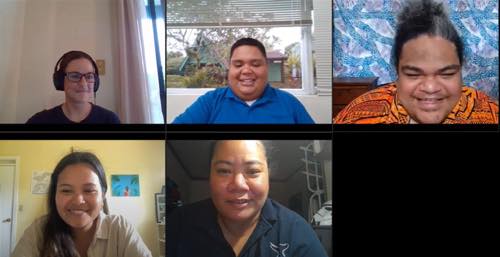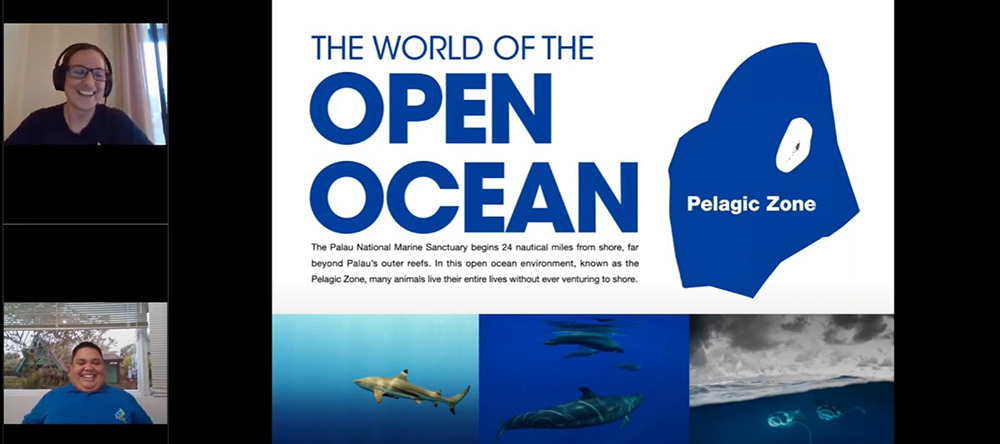- Education
PICRC Gives Virtual PNMS Tour for Students with Pacific Exchange Network
PICRC Communications and Outreach Officer Masasinge Hideos and Science Officer / Researcher Dr Louw Claassens recently presented an online lesson on the Palau National Marine Sanctuary for students in Guam, Alaska, Hawaii and American Samoa with Pacific Exchange Network.
“Our lesson was a special opportunity to share Palauan science and culture with a wide range of students across the Pacific” said Hideos. “It was a pleasure to introduce them to Palau and answer their questions”.
Hideos and Dr. Claassens explained the Sanctuary’s foundation in Palauan traditions and its role in supporting our communities. They also highlighted research efforts in the Sanctuary and showed new footage of marine life captured on deep-sea cameras and offshore Baited Remote Underwater Videos (BRUVs).
Pacific Exchange Network is a group of Pacific Islanders serving Pacific Island and Alaskan schools, communities, and indigenous/native people. The purpose of the network is to provide opportunities for collaboration across the Pacific, allowing the students to learn and interact with other Pacific Island and Alaskan students, along with providing local and indigenous specific presenters and STEM topics than can inspire them to become better stewards of their homes. PICRC is exploring ways to participate in the Network’s activities and encourages schools and educators to reach out if they are interested.
PICRC was invited to present by the National Marine Sanctuary of American Samoa (NMSAS), who also shared a lesson alongside Hideos and Dr. Claassens.
“The Palau National Marine Sanctuary has created great opportunities like this to strengthen our ties with other Pacific islands” continued Hideos. “We hope to continue working together to learn and grow as one region connected by the ocean.”
PICRC and NMSAS have worked together since 2020 through a Sister Sanctuary Agreement. As Pacific island communities with rich indigenous cultures dependent on the ocean, Palau and American Samoa use the agreement to share goals, challenges and opportunities to support our large-scale marine protected areas.



